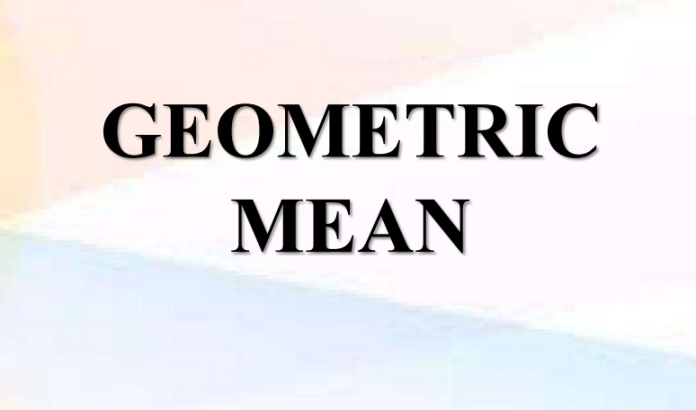The Geometric Mean (GM) is an average value or mean that calculates the product of the values of a set of integers to indicate their central tendency. In mathematics and statistics, measures of central tendency are used to represent the total of all the values in a data set.
The most important measures of central tendency are the mean, median, mode, and range. The data set’s mean is one of them, and it provides an overall view of the data. The average of all the numbers in the data set is the mean. The three types of means are arithmetic mean (AM), geometric mean (GM), and harmonic mean (HM).
Definition of Geometric Mean
The Geometric Mean (GM) defines the central tendency of a group of numbers by computing the root of the product of their values. Basically, we sum up all of the ‘n’ values and deduct the nth root, where n is the total number of values. For instance, the geometric mean of two numbers, such as 8 and 1, is equal to (81) = 8 = 22.
As a consequence, the geometric mean is frequently referred to as the product of the nth root of n integers. The arithmetic progression is not to be confused with this. The arithmetic mean is derived by multiplying the total number of data values by the total number of data values.
The data values are multiplied in a geometric mean, and the final product of data values is obtained by calculating the root with the radical index. If you have two data values, take the square root, the cube root if you have three data values, and so on. Take the fourth root if you have four data values, and so on.
Difference Between Arithmetic Mean and Geometric Mean
- The arithmetic mean is derived by multiplying the total number of data values by the total number of data values.
- By multiplying all of the values in the data set and then taking the nth root of the result, the geometric mean can be computed.
When Should the Geometric Mean be Used?
For reporting average inflation, percentage change, and growth rates, the geometric mean is the best option. The geometric mean is more accurate than the arithmetic means for these sorts of data since they are reported as fractions.
While the arithmetic means is good for values that are unrelated to one another (e.g., test scores), the geometric mean is better for dependent values, percentages, fractions, or data with a broad range of values.
We’ll go through some examples of how to calculate the geometric means of various sorts of data.
Example of the Geometric Mean in Finance
One of the most essential characteristics used to assess the profitability of an investment, whether in the present or the future, is return, or growth. When the return or growth amount is compounded, the investor must compute the investment’s final value using the geometric mean.
Consider the following scenario: an investor is presented with two investment possibilities. The first is a $20,000 initial deposit with a 3% annual interest rate over a 25-year period. The second option is to make a $20,000 initial commitment and get $40,000 after 25 years. What type of investment should the investor make?
Geometric Mean Vs Arithmetic Mean
- The geometric mean is more accurate than the arithmetic mean for favorably skewed data and percentages, despite its less widespread use.
- A cluster of lower scores and a spread-out tail on the right characterize a positively skewed distribution. A frequent example of a skewed dataset is income distribution.
- In a favorably skewed dataset, the arithmetic mean is sometimes driven upward (or rightward) by high values or outliers, despite the fact that most values are low.
- The geometric mean captures smaller values better than the arithmetic mean since it tends to be lower than the arithmetic mean.
- The geometric mean is best suited to ratio measurement levels, where variables have a genuine zero and do not take on negative values. Negative percentage changes must be expressed positively: -8 percent becomes 92 percent of the original figure, for example.










